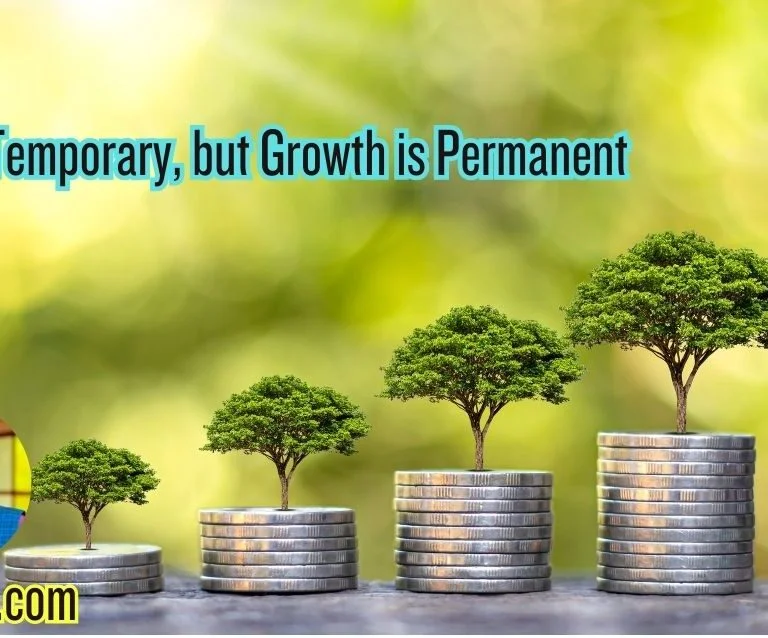Self-imposed limits refer to the boundaries that individuals create for themselves, often unconsciously, which restrict their potential and hinder personal growth
Self-imposed limits refer to the boundaries that individuals create for themselves, often unconsciously, which restrict their potential and hinder personal growth. These limits can manifest in various areas of life such as career choices, relationships, and personal aspirations. They primarily stem from psychological factors, including fear of failure, negative self-talk, and societal pressures which influence our willingness to embrace challenges.
The fear of failure plays a significant role in establishing these self-imposed boundaries. Many individuals hesitate to pursue opportunities or take risks due to an overwhelming concern about not succeeding. This fear can lead to a protective instinct that discourages individuals from stepping outside their comfort zones. Consequently, they may refrain from applying for a promotion, trying a new hobby, or exploring unfamiliar social situations, thereby limiting their potential growth.
Negative self-talk is another powerful contributor to self-imposed limits. When individuals continuously engage in derogatory or discouraging thoughts about their abilities, they reinforce a mindset that inhibits progress. Phrases such as “I am not good enough” or “I will never succeed” create a mental barrier, preventing individuals from taking necessary actions towards their goals. This internal dialogue can create a cycle of self-doubt and inaction, further entrenching these limits in one’s life.
Additionally, societal pressures can exacerbate self-imposed limits. Expectations from family, peers, and cultural norms can create an environment where individuals feel compelled to conform. These pressures may compel individuals to avoid pursuing unconventional paths or to suppress their unique talents and aspirations. As a result, they may inadvertently accept a life that is far less fulfilling than their true potential allows.
Common Examples of Self-Imposed Limitations
Self-imposed limitations can manifest in various aspects of life, hindering personal growth and advancement. One prevalent area is career advancement. Many individuals hold the belief that they are not qualified for promotions or leadership roles due to perceived inadequacies in skills or experience. This mindset can prevent them from seeking opportunities or applying for positions that could otherwise elevate their careers. Instead of recognizing their capabilities, they may unknowingly confine themselves to stagnant roles, ultimately stifling their professional potential.
Another area where self-imposed limitations are evident is in physical fitness. Common beliefs that one is too old or too out of shape to start exercising can prevent individuals from pursuing healthier lifestyles. Many people convince themselves that they lack the stamina or strength to participate in physical activities, thereby sidelining their potential for improvement. This self-doubt can lead to a life of inactivity, which, in turn, affects overall well-being and health.
Additionally, personal relationships often suffer from self-imposed limits. Individuals may hold the belief that they are unworthy of love or fear rejection, leading them to avoid meaningful connections. This mindset can cause potential bonds to remain unexplored, trapping them in isolation and loneliness. Moreover, inadequate self-esteem can hinder someone from expressing their thoughts or feelings, resulting in missed opportunities for deeper intimacy and understanding.
In creative pursuits, self-limiting beliefs can stifle artistic expression. Many aspiring artists and writers fall prey to the notion that their work is not good enough or that they lack the talent required to succeed. Consequently, they may avoid sharing their creations or pursuing projects that could unleash their creativity, ultimately failing to realize their full artistic potential.
The Psychology of Boundaries: Why We Limit Ourselves
The concept of self-imposed limits is often deeply rooted in various psychological factors that shape an individual’s perceptions and beliefs about their capabilities. Cognitive biases, particularly, play a significant role in the formation of these boundaries. For instance, the confirmation bias leads individuals to seek out and favor information that confirms their existing beliefs while disregarding evidence that contradicts them. This selective thinking can perpetuate a cycle of limitation, as people unconsciously reinforce their own boundaries.
Moreover, past experiences heavily influence how individuals perceive what they can achieve. Negative experiences, such as failures or criticism, can lead to the internalization of limits. When individuals face setbacks, they are likely to conclude that they are incapable of overcoming challenges again in the future. This learned behavior becomes a psychological barrier, constraining personal growth and exploration of potential.
Fear of judgment is another critical factor in the establishment of psychological boundaries. Individuals often avoid stepping outside their comfort zones due to concerns about how others may perceive their actions. This fear can be paralyzing, encouraging people to conform to societal norms and expectations instead of pursuing their unique aspirations. As a result, the comfort of familiarity becomes a fortress, preventing individuals from venturing into unknown territories that could lead to personal development.
Furthermore, societal conditioning and cultural factors can also contribute to self-limiting behaviors. Many individuals grow up in environments that impose specific roles, expectations, and standards. This upbringing often instills a sense of what is considered acceptable, shaping beliefs about one’s capabilities in the process. Consequently, breaking these self-imposed barriers requires a conscious effort to challenge both internal and external influences that dictate perceived limits.
The Power of Challenging Your Limits
Challenging one’s limits can be a transformative experience, serving as a catalyst for personal growth and self-discovery. When individuals push against their established boundaries, they often uncover reservoirs of strength that were previously unknown. This process of facing challenges not only cultivates resilience but also significantly boosts confidence. By stepping outside their comfort zones, individuals are more likely to gain a clearer understanding of their capabilities, ultimately realizing that they are capable of much more than they initially believed.
The act of challenging limits fosters an environment where discomfort becomes a vital component of development. Embracing discomfort can lead to improved problem-solving skills and a keen ability to adapt to new circumstances. As individuals encounter and overcome obstacles, they build a more robust skill set that empowers them to tackle future challenges with greater confidence and poise. Moreover, this proactive approach to personal boundaries encourages a mindset that views setbacks as opportunities for learning and growth, rather than as insurmountable barriers.
Furthermore, when individuals actively choose to confront challenges, they often find themselves in a position to inspire others. By demonstrating that it is possible to transcend self-imposed limits, they can motivate peers and the broader community to embark on their journeys of self-improvement. The ripple effect of challenging one’s limits extends beyond personal benefit; it fosters a culture of empowerment and growth within social and professional circles.
In essence, the journey of pushing against one’s limits is a powerful tool for personal evolution. It reveals hidden strengths, bolsters self-assurance, and drives individuals towards their fullest potential. By embracing the discomfort that comes with this journey, individuals open themselves to a life enriched with growth, resilience, and the confidence needed to pursue their ambitions.
Strategies to Redefine Your Limits
Redefining your self-imposed limits is a transformative process that begins with clear and specific goal setting. Establishing achievable yet challenging goals allows individuals to visualize their potential and identify the necessary steps to work towards it. Utilizing the SMART criteria—goals that are Specific, Measurable, Achievable, Relevant, and Time-bound—can significantly enhance the likelihood of success. By breaking down larger aspirations into smaller, manageable tasks, individuals create a roadmap that makes the journey to self-improvement both structured and less daunting.
Seeking mentorship or support is another crucial strategy. Engaging with mentors who have successfully navigated their limitations can provide invaluable insights and encouragement. Mentors often share personal experiences, offering different perspectives that can inspire individuals to view their challenges in a new light. Additionally, surrounding oneself with a supportive network can foster accountability and provide motivation, making the journey to redefine limits more collaborative and enriching.
Self-reflection plays a pivotal role in understanding personal barriers. By taking time to assess past experiences, individuals can identify patterns of self-imposed limits and recognize the fears or beliefs that contribute to them. Journaling or practicing mindfulness can be effective tools for facilitating this reflection, enabling deeper self-awareness and clarity of thought. Recognizing these limitations is the first step toward dismantling them.
Gradually stepping out of comfort zones is essential to the process of redefining limits. It is beneficial to set small challenges that incrementally push personal boundaries. This can involve taking on new responsibilities at work, participating in unfamiliar activities, or engaging with new social groups. Each successful experience not only builds confidence but also expands one’s perception of their capabilities. Ultimately, by combining goal-setting, mentorship, self-reflection, and gradual exposure to new experiences, individuals can effectively redefine and expand their self-imposed limits.
Transforming Challenges into Opportunities
Challenges are an inevitable part of life, yet they often serve as catalysts for personal growth and development. When individuals encounter obstacles, a pivotal mindset shift occurs, allowing them to transform these challenges into remarkable opportunities. Embracing a growth mindset enables people to view difficulties not as roadblocks but as stepping stones toward achieving their full potential.
One illustrative example is the story of Thomas Edison, whose journey to invent the light bulb was fraught with failures and setbacks. During his extensive experimentation, he faced numerous challenges, yet instead of succumbing to despair, he viewed each failure as a learning experience, which ultimately led to one of the world’s most significant inventions. Edison famously stated, “I have not failed. I’ve just found 10,000 ways that won’t work.” This perspective highlights how resilience and a positive outlook can transform adversity into opportunity.
Similarly, consider the case of J.K. Rowling. Before the success of the Harry Potter series, she faced numerous challenges, including financial struggles and personal hardships. Rather than letting her circumstances define her, she harnessed her experiences and channelled them into her writing. The characters and stories that emerged from her challenges resonated with millions, allowing her to transform her struggles into an opportunity for connection and creativity.
These anecdotes illustrate that the successful transformation of challenges into opportunities hinges on one key factor: mindset. By consciously choosing to embrace hurdles as growth opportunities, individuals not only expand their capabilities but also develop vital skills such as problem-solving, resilience, and adaptability. This shift in perception is essential in unleashing one’s potential and redefining self-imposed limits. Thus, facing challenges with a constructive attitude is foundational for personal transformation and success.
Real Life Success Stories: Breaking Barriers
Numerous individuals have demonstrated that breaking self-imposed barriers can lead to remarkable success, often serving as an inspiration to many. One of the most compelling narratives is that of Nick Vujicic, who was born without arms and legs. Despite facing tremendous challenges, Nick has become a sought-after motivational speaker and entrepreneur. His philosophy emphasizes the importance of a positive mindset, leading him to achieve extraordinary feats and touch millions of lives through his message of hope and resilience. Nick’s journey exemplifies how redefining personal limits can result in a profound impact on not only one’s life but the lives of countless others.
In the realm of sports, we can look to the story of Michael Jordan, widely regarded as one of the greatest basketball players of all time. During his high school years, Jordan faced rejection when he was cut from his varsity basketball team. Rather than succumbing to disappointment, he used that experience as motivation to improve his skills relentlessly. His determination paid off, leading him to a successful career in the NBA, where he won six championships and became an international icon. Michael’s experience highlights the importance of resilience and commitment to overcoming self-imposed limitations.
Moreover, Malala Yousafzai’s narrative is another poignant example of breaking barriers. A staunch advocate for girls’ education, Malala faced life-threatening opposition when she vocalized her beliefs in Pakistan. Surviving an assassination attempt, she emerged more determined than ever, continuing her activism and receiving the Nobel Peace Prize at a young age. Her story underlines the strength of the human spirit and the potential to rise above personal and societal constraints.
These inspiring success stories illustrate how individuals from diverse fields have not only redefined their own limits but have also created pathways for others to follow suit. By confronting self-imposed barriers, they have achieved remarkable results, encouraging others to embark on their own journeys of self-discovery and transformation.
The Role of Mindfulness and Self-Compassion
Mindfulness and self-compassion are crucial components in the journey of redefining personal limits. Mindfulness, the practice of being present and fully engaged in the moment, allows individuals to become aware of their thoughts, feelings, and bodily sensations without judgment. This awareness is significant because it helps calm the inner critic that often perpetuates self-imposed boundaries. By practicing mindfulness, individuals can observe their thoughts objectively, leading to a greater understanding of their limitations and the realization that many are constructed from fear rather than reality.
In addition to mindfulness, self-compassion plays a pivotal role in fostering a positive inner dialogue. Self-compassion entails treating oneself kindly, especially in moments of failure or struggle. Rather than berating oneself for mistakes, self-compassion encourages individuals to engage in positive self-talk and affirmations, cultivating a supportive and affirming mindset. This shift in self-perception allows individuals to approach challenges with a sense of kindness and understanding, making it easier to push against perceived limits. By integrating self-compassion into daily practices, individuals can replace their harsh inner critic with a voice that is encouraging and nurturing.
Practices such as meditation can greatly enhance both mindfulness and self-compassion. Through meditation, individuals can train their minds to focus on the present and detach from negative thought patterns. This dedicated time for introspection helps to reinforce self-acceptance and kindness, providing a foundation for overcoming the self-imposed barriers that often hinder personal growth. Regularly engaging in mindfulness practices, along with affirming self-talk, can thus lead to a significant transformation in how one perceives and approaches their limits, opening doors to an expanded sense of capability.
Setting New Limits: The Journey Ahead
As we navigate through life, it is essential to recognize that self-imposed limits often act as barriers to our growth and potential. The journey toward setting new limits involves a conscious effort to reassess our beliefs, goals, and aspirations continuously. This process encourages individuals to identify areas where they may inadvertently hinder their own progress and to actively seek out opportunities to expand their horizons.
To embark on this transformative journey, one effective strategy is to engage in self-reflection. Take time to evaluate your current limits and consider whether they align with your aspirations. Ask yourself what fears or doubts might be keeping you from reaching beyond these boundaries. By acknowledging these self-imposed restrictions, you pave the way for a more liberating outlook that fosters growth.
Additionally, it is crucial to set incremental, achievable goals that stretch your capabilities without overwhelming you. By defining specific milestones, you create a clear roadmap that will guide you toward success. Celebrating small victories along the way reinforces the progress made and helps to build confidence in your ability to surpass previously held limits.
Furthermore, embracing a mindset of lifelong learning can significantly contribute to your development. This involves remaining open to new experiences and knowledge, which in turn allows for continual reassessment of your boundaries. Engaging with diverse perspectives and seeking mentorship can enhance your understanding and challenge pre-existing beliefs about your potential.
Ultimately, as you set new limits for yourself, it is essential to remain flexible and adaptable. The process of personal growth is ongoing. Therefore, maintaining an attitude of curiosity and openness to change will empower you to redefine your limits continually, fostering a life rich with possibilities and fulfillment.









